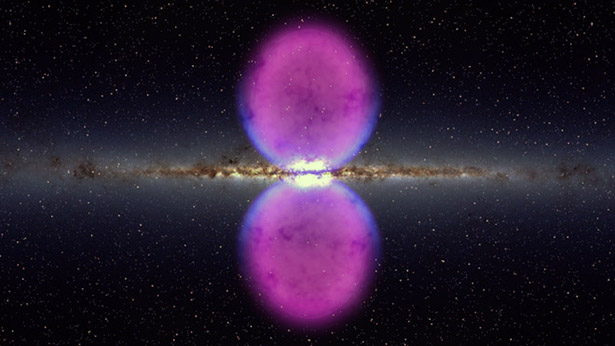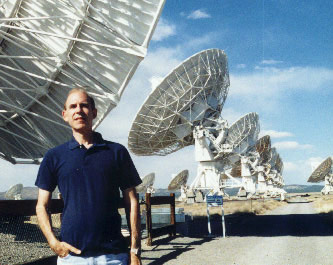Galactic Superwaves and Core Explosions
Galactic Superwaves
One principal area of research that the Starburst Foundation is involved with is the investigation of Galactic superwaves, intense cosmic ray particle barrages that travel to us from the center of our Galaxy and that can last for periods of up to several thousand years. Astronomical and geological evidence indicates that the last major superwave impacted our solar system around 12,000 to 16,000 years ago and produced abrupt changes of the Earth's climate. It is estimated that approximately one or two superwaves strong enough to trigger an ice age are presently on their way to us from their birth place 23,000 light years away. There is a finite chance that one such event could arrive within the next few decades.
Less intense superwaves, which recur with considerable frequency, could also pose a threat. There is evidence that the Galactic Center has erupted as many as ten times in the past two millennia, the most recent event occurring about 700 years ago. While these low intensity events could have passed unnoticed in earlier centuries, today they could be extremely hazardous. The electromagnetic radiation pulse accompanying such a superwave would be far more intense than any gamma ray pulse we have experienced in modern times. It could knock out electrical power grids and communication networks on a global scale and possibly even inadvertently trigger nuclear missile launchings. Consequently, study of this phenomenon deserves a very high priority.
Starburst researcher Dr. Paul LaViolette began alerting the scientific community to the existence of superwaves in 1983 through his published papers and scientific conference presentations (see paper archive). He also raised the public awareness about the superwave phenomenon through his book Earth Under Fire as well as through various magazine articles.
Many aspects of Dr. LaViolette's superwave theory have since been verified by various observations; see the following list of predictions and their subsequent verification.
Further information



